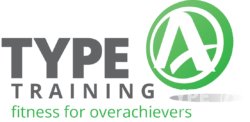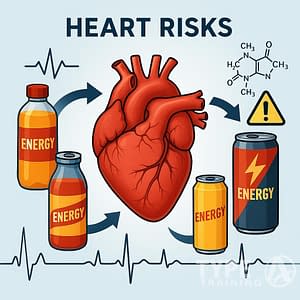Calisthenics practitioners often have smaller legs compared to their upper bodies. This observation stems from the nature of bodyweight exercises typically used in calisthenics routines. Understanding why calisthenics practitioners have small legs can help you tailor your training approach.
Understanding why calisthenics practitioners have small legs can provide insights into training methodologies and goals.
Most calisthenics movements focus on upper body strength and core stability. There are fewer options for intense leg training without additional equipment.
This leads to the question: why calisthenics practitioners have small legs despite regular training.
Popular posts:
Moreover, many wonder why calisthenics practitioners have small legs compared to other workout styles.

Many calisthenics enthusiasts prioritize skills like handstands, muscle-ups, and planche holds, which primarily target the upper body and core. While leg exercises like squats and lunges are included in calisthenics workouts, they may not provide enough resistance for significant muscle growth in the lower body.
This leads to speculation about why calisthenics practitioners have small legs despite their dedication.
To explore why calisthenics practitioners have small legs, it’s essential to consider their training focus.
The limited leg development in calisthenics can also be attributed to the principle of specificity in training. As practitioners focus on mastering bodyweight skills, their training adapts to these specific movement patterns, potentially neglecting hypertrophy-focused leg exercises.
Many ask themselves why calisthenics practitioners have small legs when they look at upper body strength.
Key Takeaways
-
- Calisthenics workouts often emphasize upper body and core exercises over leg training
- Bodyweight leg exercises may not provide sufficient resistance for significant muscle growth
Understanding why calisthenics practitioners have small legs can help address common misconceptions.
Ultimately, delving into why calisthenics practitioners have small legs can help refine your own fitness approach.
- Specific calisthenics skills prioritize upper body strength, potentially neglecting lower body development
Why Calisthenics Practitioners Have Small Legs

So, why calisthenics practitioners have small legs is a question worth exploring further.
Thus, understanding why calisthenics practitioners have small legs can enhance your training efficiency.
Calisthenics training focuses on bodyweight exercises that build strength, flexibility, and endurance. This approach emphasizes functional movements and full-body workouts.
The answer to why calisthenics practitioners have small legs lies in their training methods.
Core Principles and Benefits
Calisthenics relies on using your own body weight as resistance. This method improves coordination, balance, and stability. You’ll develop functional strength that translates to everyday activities.
To understand why calisthenics practitioners have small legs, we need to analyze their routines.
Calisthenic exercises often engage multiple muscle groups simultaneously. This leads to improved overall fitness and muscle endurance.
Flexibility is another key component. Many exercises require a full range of motion, enhancing your mobility over time.
One of the biggest advantages is convenience. You can perform calisthenics anywhere, without needing expensive equipment or gym memberships.
Common Calisthenic Exercises
Push-ups are a fundamental calisthenic exercise. They target your chest, shoulders, and triceps while engaging your core.
Pull-ups and chin-ups are excellent for upper body strength. These exercises focus on your back and biceps.
Planks are crucial for core strength and stability. They engage your entire midsection, including your abs and lower back.
Squats and lunges are essential for lower body strength. These exercises target your quadriceps, hamstrings, and glutes.
Burpees provide a full-body workout. They combine strength training with cardiovascular benefits.
To maximize results, focus on proper form in all exercises. This ensures you target the right muscles and avoid injury.
Understanding Leg Development
The anatomy reveals why calisthenics practitioners have small legs compared to traditional lifters.
This emphasizes why calisthenics practitioners have small legs compared to their peers in other fitness domains.
Leg development in calisthenics requires a deep understanding of lower body anatomy and the principles of strength and endurance training. Proper execution of bodyweight exercises can lead to significant gains in leg strength and muscle definition.
Anatomy of the Lower Body
This anatomical insight helps in addressing why calisthenics practitioners have small legs.
The legs consist of several major muscle groups. Your quadriceps are located on the front of your thighs, while hamstrings run along the back. Glutes form your buttocks and play a crucial role in hip extension. Calves, comprising the gastrocnemius and soleus muscles, are essential for ankle movement and stability.
These muscles work together during calisthenics exercises. Bodyweight squats engage your quads, hamstrings, and glutes simultaneously. Pistol squats, a challenging single-leg variation, require even greater muscle activation and balance.
Leg Strength and Endurance
Calisthenics builds both strength and endurance in your legs. Plyometric exercises like jump squats increase explosive power. Muscle-ups, while primarily an upper body movement, also engage your lower body for stability and momentum.
Ultimately, this leads us back to why calisthenics practitioners have small legs, a common observation.
This observation makes it all the more important to understand why calisthenics practitioners have small legs.
Bodyweight training often emphasizes endurance over pure strength. High-rep sets of squats and lunges improve muscle stamina. This focus on endurance can result in leaner, more defined legs rather than bulky muscles.
To maximize leg development, incorporate a variety of exercises. Mix standard squats with advanced movements like single-leg squats. Add plyometric exercises to boost power and athleticism. Remember, consistent practice and proper form are key to achieving well-developed legs through calisthenics.
Challenges and Limitations
Calisthenics practitioners often face unique obstacles in developing leg strength and muscle mass. These challenges stem from the nature of bodyweight exercises and their intensity compared to traditional weighted workouts.
Calisthenics and Leg Intensity
Bodyweight exercises for legs can be less intense than weighted alternatives. Squats and lunges without added resistance may not provide enough stimulus for significant muscle growth. Your body quickly adapts to these movements, making it harder to progress.
To increase difficulty, you can try single-leg variations or plyometric exercises. However, these still may not match the progressive overload possible with weights. Achieving hypertrophy in leg muscles through calisthenics alone can be a slow process.
Comparing Bodyweight versus Weighted Exercises
Weighted exercises offer clear advantages for leg development. Barbell squats and leg presses allow you to incrementally increase resistance, targeting leg muscles more effectively. This progressive overload is crucial for muscle growth and strength gains.
Calisthenics leg workouts rely on leverage and balance. While they improve functional strength, they may not isolate leg muscles as effectively as machines or free weights. You might find it challenging to target specific leg muscles like the hamstrings or calves with bodyweight exercises alone.
Incorporating both methods into your fitness routine can help overcome these limitations. Combining calisthenics with weighted exercises may provide a more balanced approach to leg development.
Advanced Calisthenics for Leg Development
Advanced techniques can help explain why calisthenics practitioners have small legs.
These insights are crucial in explaining why calisthenics practitioners have small legs while excelling in upper body strength.
Effective calisthenics techniques can significantly enhance leg strength and muscle development. These methods focus on leveraging bodyweight and adding resistance to maximize lower body gains.
Incorporating Resistance into Calisthenics
To build leg muscle with calisthenics, add resistance to your routine. Use weighted vests or ankle weights during squats and lunges. Try banded squats to increase tension throughout the movement.
This brings us back to the question of why calisthenics practitioners have small legs.
Incorporate single-leg squats to challenge your balance and isolate each leg.
For explosive power, add plyometric exercises like box jumps and burpees. These high-intensity moves engage multiple muscle groups and boost your cardiovascular fitness.
Perform Bulgarian split squats with a backpack filled with books for an added challenge.
Compound Movements and Variation
Combine exercises to target multiple leg muscles simultaneously. Pair bodyweight squats with lunges in a circuit. Add jump squats between sets of dips to maintain leg engagement.
Vary your exercise selection to prevent plateaus. Alternate between regular squats, sumo squats, and pistol squats.
Incorporate agility drills like lateral jumps and quick-feet exercises to improve coordination and muscle responsiveness.
Try isometric holds at different points during your squats and lunges. This technique increases time under tension, promoting muscle growth.
Experiment with slow, controlled movements to enhance muscle engagement and build strength.
Designing an Effective Calisthenics Leg Routine
Moreover, understanding why calisthenics practitioners have small legs is crucial for targeted training.
Creating a well-structured leg routine is crucial for calisthenics practitioners to build lower body strength and size. Focus on exercise selection, proper form, and progressive overload to maximize results.
Workout Structure and Sequencing
Start your leg workouts with compound movements that target multiple muscle groups. Begin with squats, lunges, or pistol squats to engage your quads, hamstrings, and glutes. Follow these with calf raises and single-leg exercises for balance and stability.
Aim for 3-4 sets of each exercise, with 8-12 repetitions per set. Rest 60-90 seconds between sets to maintain intensity.
Perform leg workouts 2-3 times per week, allowing 48-72 hours of recovery between sessions.
Include mobility exercises like leg swings and hip circles to improve flexibility and prevent injury.
End your routine with static stretches to enhance recovery and maintain range of motion.
Progressive Overload and Adaptation
To continually challenge your muscles and promote growth, implement progressive overload techniques. Increase repetitions, sets, or exercise difficulty over time.
Start with basic squat variations and progress to more advanced moves like jump squats or single-leg squats.
Add resistance bands or weighted vests to increase intensity as you become stronger.
Track your workouts to monitor progress. Gradually increase the number of repetitions or sets every 1-2 weeks.
When an exercise becomes too easy, move to a more challenging variation.
Incorporate tempo changes, such as slower eccentric phases or paused repetitions, to increase time under tension and stimulate muscle growth.
Adjust your routine every 4-6 weeks to prevent plateaus and maintain progress.
Why Calisthenics Practitioners Have Small Legs
Enhancing your calisthenics routine with complementary practices can improve overall performance and address potential imbalances. These practices focus on flexibility, mobility, and cardiovascular fitness to support your bodyweight training.
Stretching and Mobility Work
With this knowledge, you can better understand why calisthenics practitioners have small legs.
Start your calisthenics session with dynamic stretches to warm up your muscles and joints.
Focus on movements that target your hips, shoulders, and spine.
Incorporate mobility drills like arm circles, leg swings, and torso rotations to improve your range of motion.
After your workout, perform static stretches to improve flexibility.
Hold each stretch for 15-30 seconds, targeting major muscle groups.
Pay special attention to your hamstrings, quadriceps, and hip flexors to counteract tightness from calisthenics exercises.
Include foam rolling in your routine to release muscle tension and improve tissue quality.
Roll out your legs, back, and shoulders for 1-2 minutes each.
This practice can enhance recovery and prevent injuries.
Incorporating Cardiovascular Exercises
Incorporating these practices can address why calisthenics practitioners have small legs.
Add cardio exercises to your calisthenics routine to boost your aerobic capacity and endurance.
Start with 10-15 minutes of moderate-intensity cardio, such as jogging or cycling, before your strength work.
Integrate high-intensity interval training (HIIT) into your workouts.
Perform exercises like burpees, mountain climbers, and jumping jacks in short, intense bursts.
These elements contribute to the overall picture of why calisthenics practitioners have small legs.
Try 30 seconds of work followed by 30 seconds of rest for 5-10 rounds.
Consider adding plyometric exercises to improve power and explosiveness.
Box jumps, squat jumps, and clap push-ups can enhance your agility and coordination.
Start with 2-3 sets of 5-10 repetitions, focusing on proper form and landing technique.
Frequently Asked Questions
This context helps clarify why calisthenics practitioners have small legs and how that aligns with their training goals.
Calisthenics training can impact leg muscle development in specific ways. Let’s explore some common questions about calisthenics and leg muscles.
How can calisthenics affect leg muscle development?
Calisthenics typically emphasizes bodyweight exercises. This approach can lead to lean, functional leg muscles rather than large, bulky ones.
Thus, exploring why calisthenics practitioners have small legs is essential for effective training.
Your legs adapt to the specific demands of calisthenics movements. These exercises often focus on endurance and control rather than maximum strength or hypertrophy.
What leg workouts are common in calisthenics training?
Squats, lunges, and jump variations are staples of calisthenics leg training.
Pistol squats, box jumps, and plyometric exercises are also frequently used.
Understanding these workouts will clarify why calisthenics practitioners have small legs.
These movements target multiple muscle groups simultaneously. They improve balance, coordination, and functional strength in your lower body.
Can you achieve significant leg muscle size with bodyweight exercises?
Ultimately, many are curious about why calisthenics practitioners have small legs.
Building substantial leg size through calisthenics alone can be challenging.
Bodyweight exercises may not provide enough resistance for significant hypertrophy in most people.
You can increase difficulty by adding single-leg variations or plyometrics. These modifications may help stimulate muscle growth to some extent.
What are the challenges of building leg strength with calisthenics?
The core of the matter is why calisthenics practitioners have small legs despite intense training.
Progressive overload can be difficult with bodyweight exercises alone.
Your legs are already accustomed to supporting your body weight throughout the day.
Increasing resistance often requires creative solutions like adding weighted vests or resistance bands.
Finding ways to continually challenge your legs can be more complex than simply adding weight to a barbell.
How does calisthenics training lead to a leaner physique overall?
Calisthenics workouts often involve full-body movements and high-intensity intervals.
This type of training can boost your metabolism and promote fat loss.
The focus on bodyweight exercises naturally limits muscle hypertrophy. Your body adapts to become more efficient at moving its own weight, resulting in a leaner appearance.
Ultimately, this understanding sheds light on why calisthenics practitioners have small legs in comparison to other training types.
Why might calisthenics practitioners appear to have less muscular legs compared to weightlifters?
Calisthenics training typically emphasizes relative strength over absolute strength. This approach tends to produce leaner, more defined muscles rather than bulky ones.
This divergence in training methods leads to why calisthenics practitioners have small legs overall.
Weightlifting, especially with heavy loads, can stimulate more muscle hypertrophy. The difference in training styles often leads to visibly different physiques, particularly in leg development.










